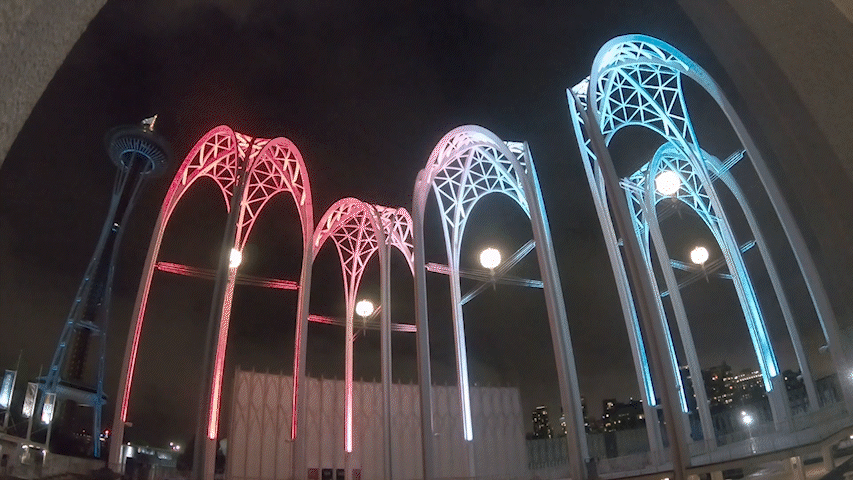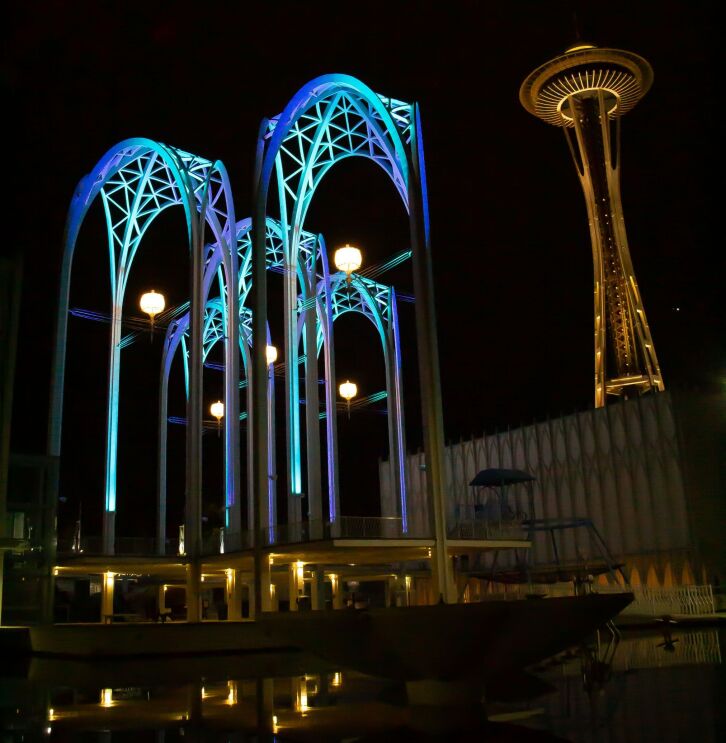As obsessive fans go, this one is up there with the best of the Beliebers. So devoted are they to Seattle's new ice hockey team, the Kraken, that they never sleep—spending all day, every day, trawling the web for information on the next game and honing a unique goal celebration style all of their own.
Luckily, the superfan in question isn't in danger of getting behind on their homework, forgetting to pay their bills, or, worse, adopting a new team, because they aren't human. They are an automated application, developed by Amazon Web Services (AWS) in collaboration with Pacific Science Center (PacSci) and the Kraken, to light up the PacSci building's five iconic arches every time the team scores during a home game.
The pilot project between the three organizations is designed to demonstrate the many possibilities data and some clever cloud technology can open up for communicating via well-known buildings and landmarks in our urban environments.
To explain the significance of PacSci to non-Seattle residents: the independent, not-for-profit center promotes science education and innovation and is a much-loved local institution. Built by esteemed local architect Minoru Yamasaki for the 1962 Seattle World's Fair, for decades it's been a destination for many a Seattle school trip. Its arches can be seen from numerous vantage points across the city, and it's now a next door neighbor to the newly opened Climate Pledge Arena—home to the National Hockey League's Kraken and the Women's National Basketball Association's Seattle Storm.

The arches, each standing at 132 feet (40 meters) tall, are studded with energy-efficient lights that can display an array of different colors. It's this lighting system that AWS' Kraken-fixated technology is communicating with.
The application is constantly monitoring online sports data to ensure it's on standby for the next Kraken home game. When a game starts, the app pulls in a continuous stream of live data. Programmed to recognize goal data specifically, it sends a trigger in near real time to the arches' lighting system whenever a Kraken player shoots and scores.
While the application is set up to respond to Kraken goals only, there are many other data points—for example, on injuries, penalties, time left in the game, and certain player stats—that could be used to trigger the lights. And we're still only talking about a sporting event. In theory, the low-cost, simple application could be programmed to recognize many different kinds of data—something PacSci is already starting to investigate.

"AWS makes it possible for Pacific Science Center to harness the power of the cloud as part of our service to the community," said Will Daugherty, president and CEO of PacSci. "We are a community laboratory and living room for conversations about science and technology issues relevant to our region, and we want to do this in the most imaginative and engaging way possible.
"We are exploring other science-based topics that we can represent through visual displays on the arches—such as the Aurora Borealis, the weather forecast, traffic on Interstate 5, salmon climbing the ladder at the Ballard Locks, and more," he said. "We serve as a platform for innovation, so we welcome ideas and collaboration opportunities."
The potential of the arches project is only a taste of what's to come. As PacSci and AWS plan to expand their collaboration to a range of science, technology, engineering, and math (STEM) initiatives, Seattle can expect to play host to even more creative conversations on everything from sports to sustainability to smart cities in future.
Trending news and stories









